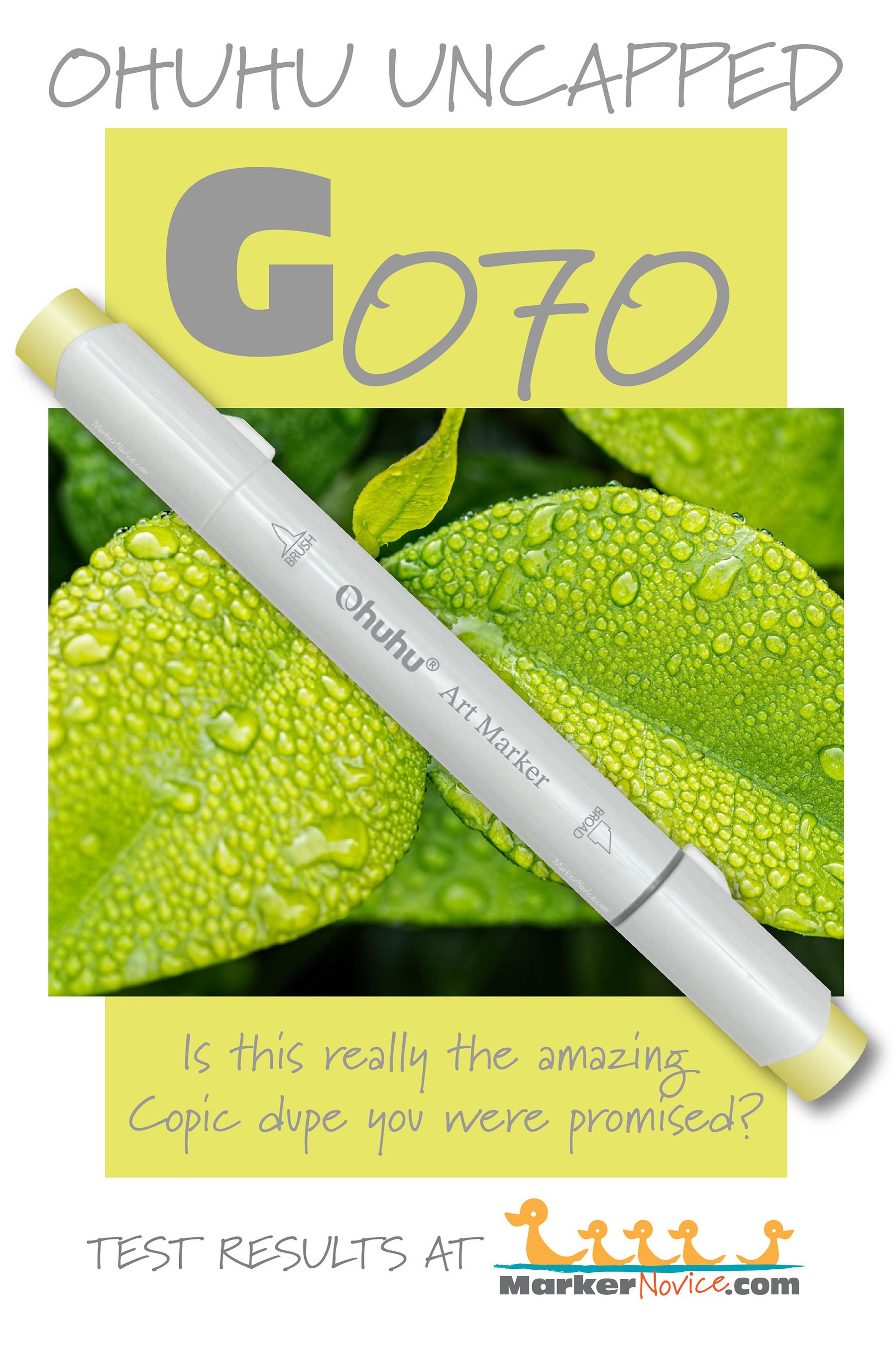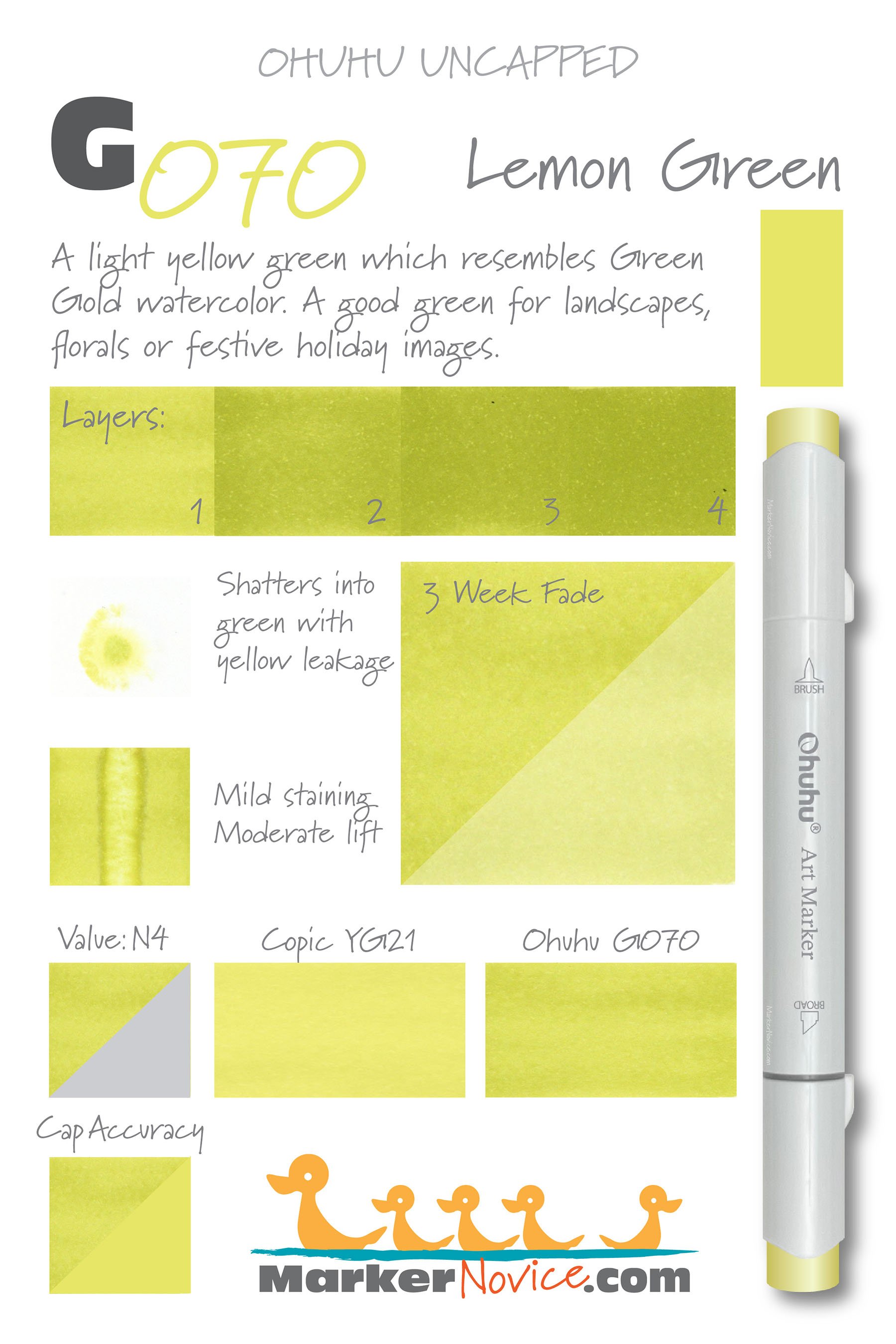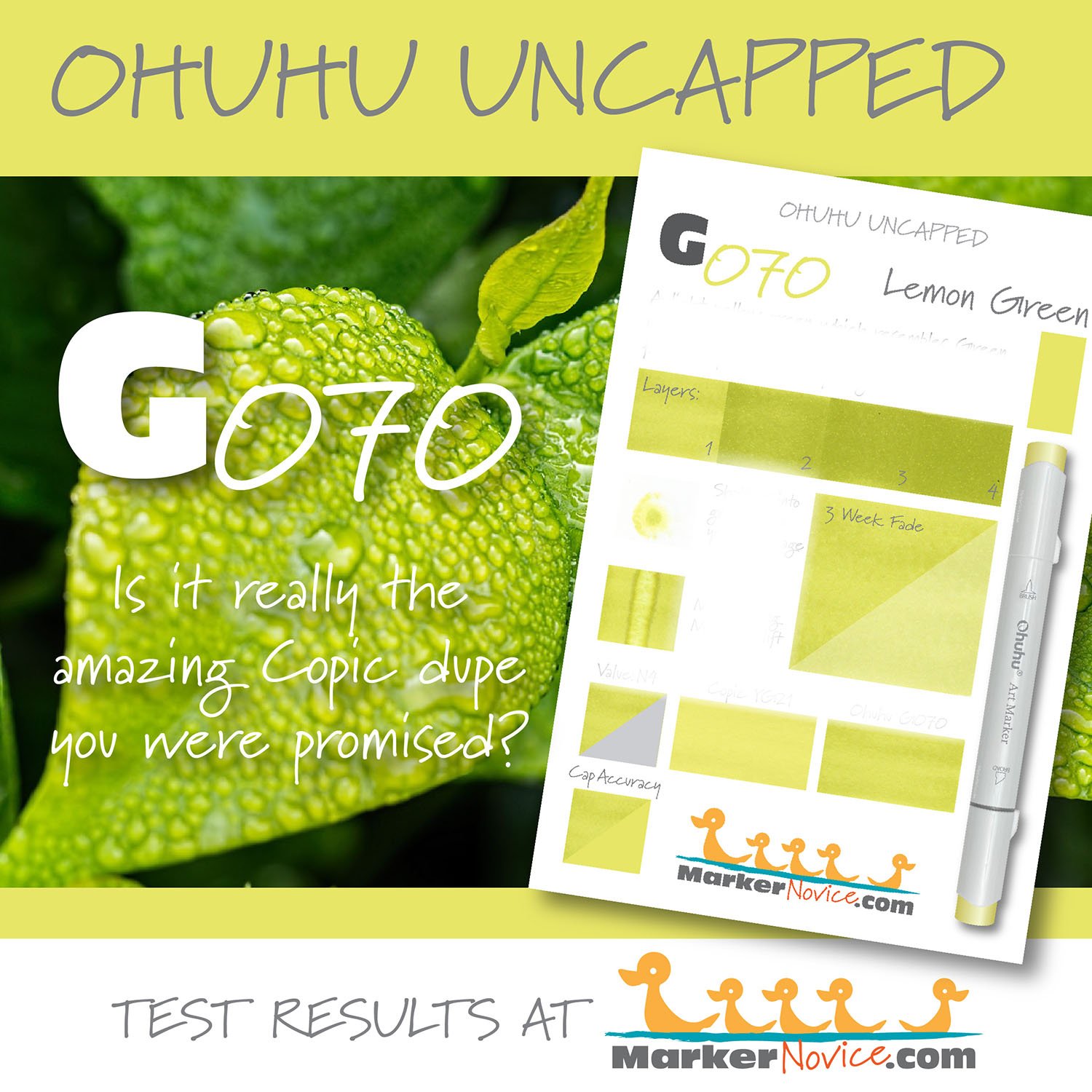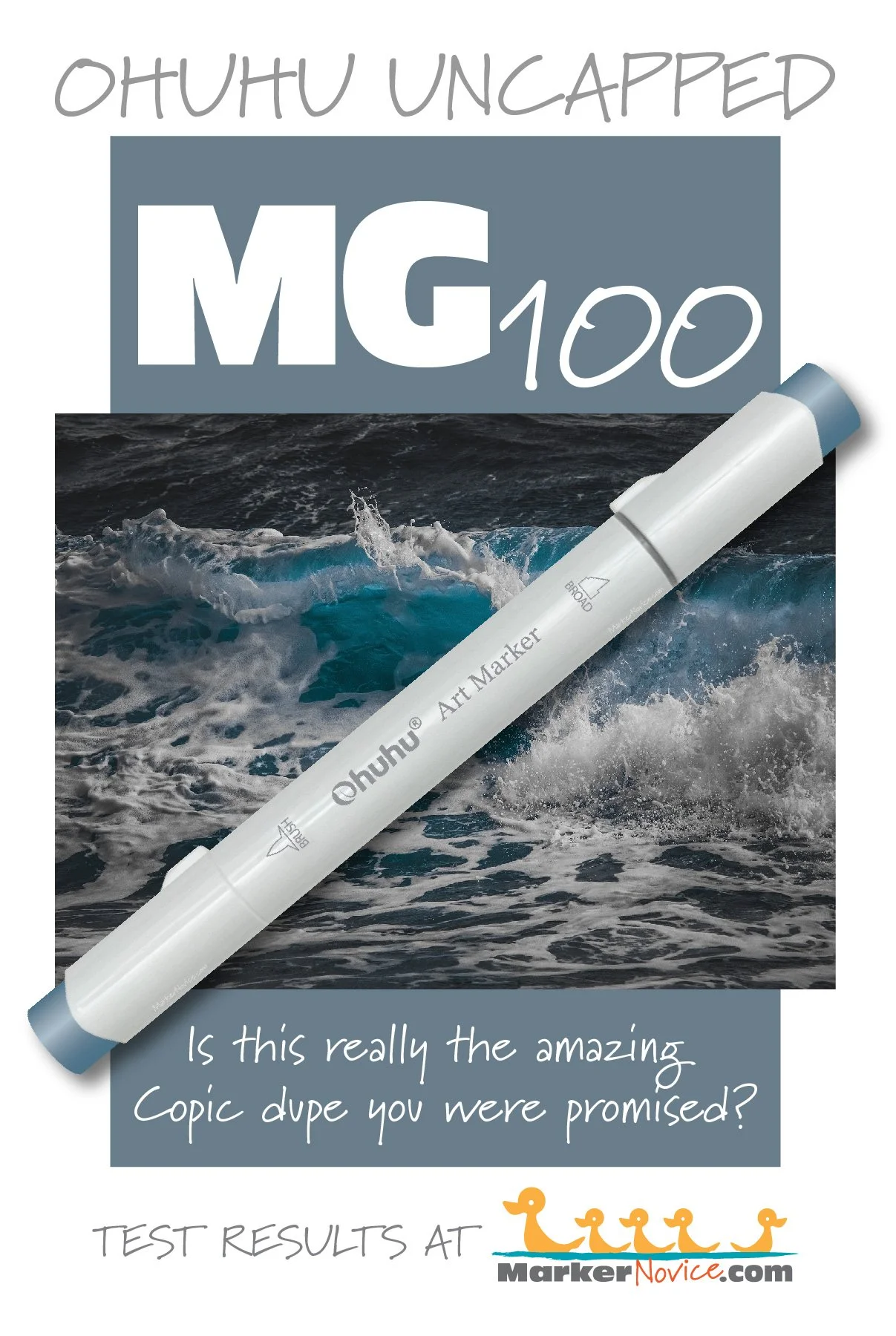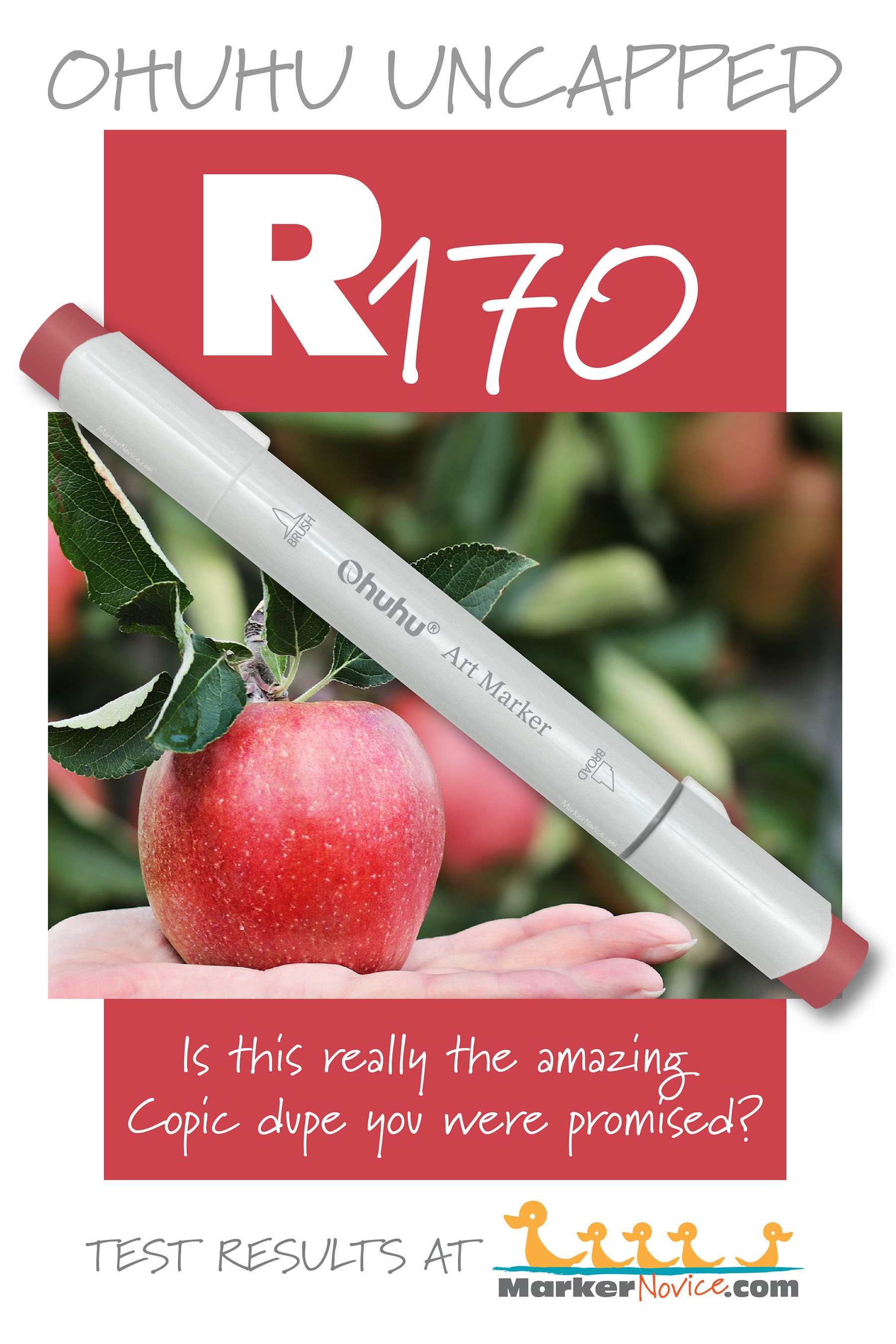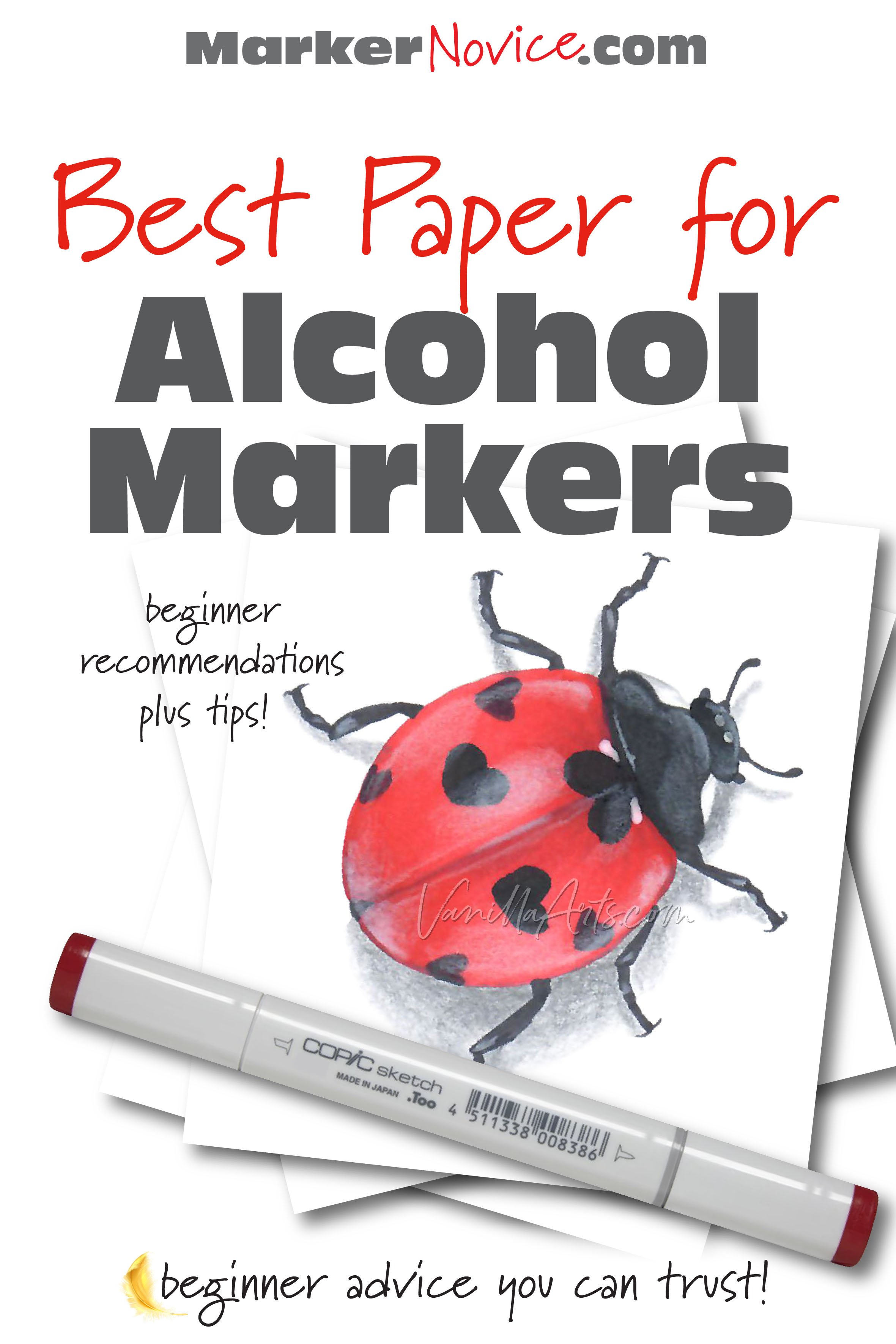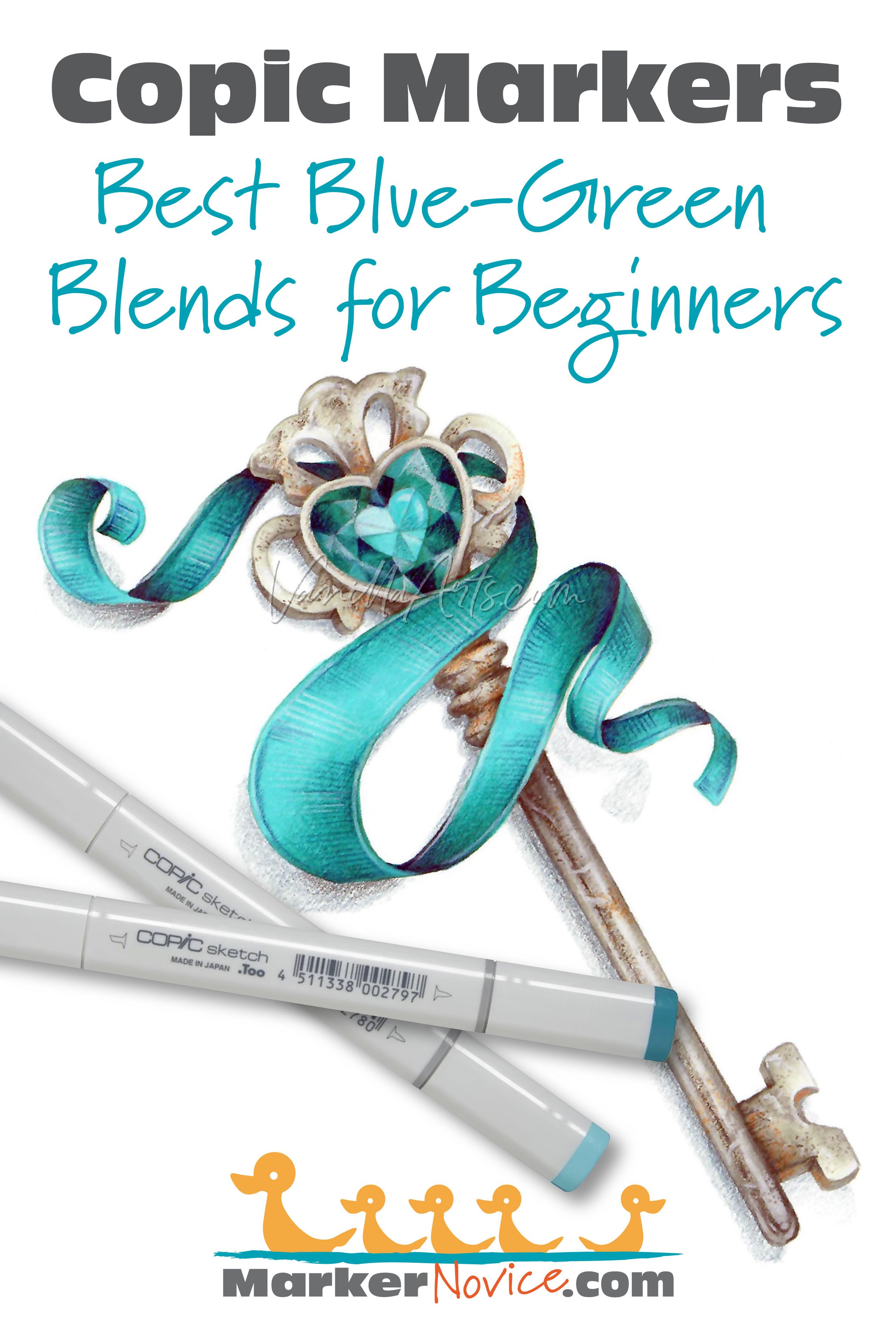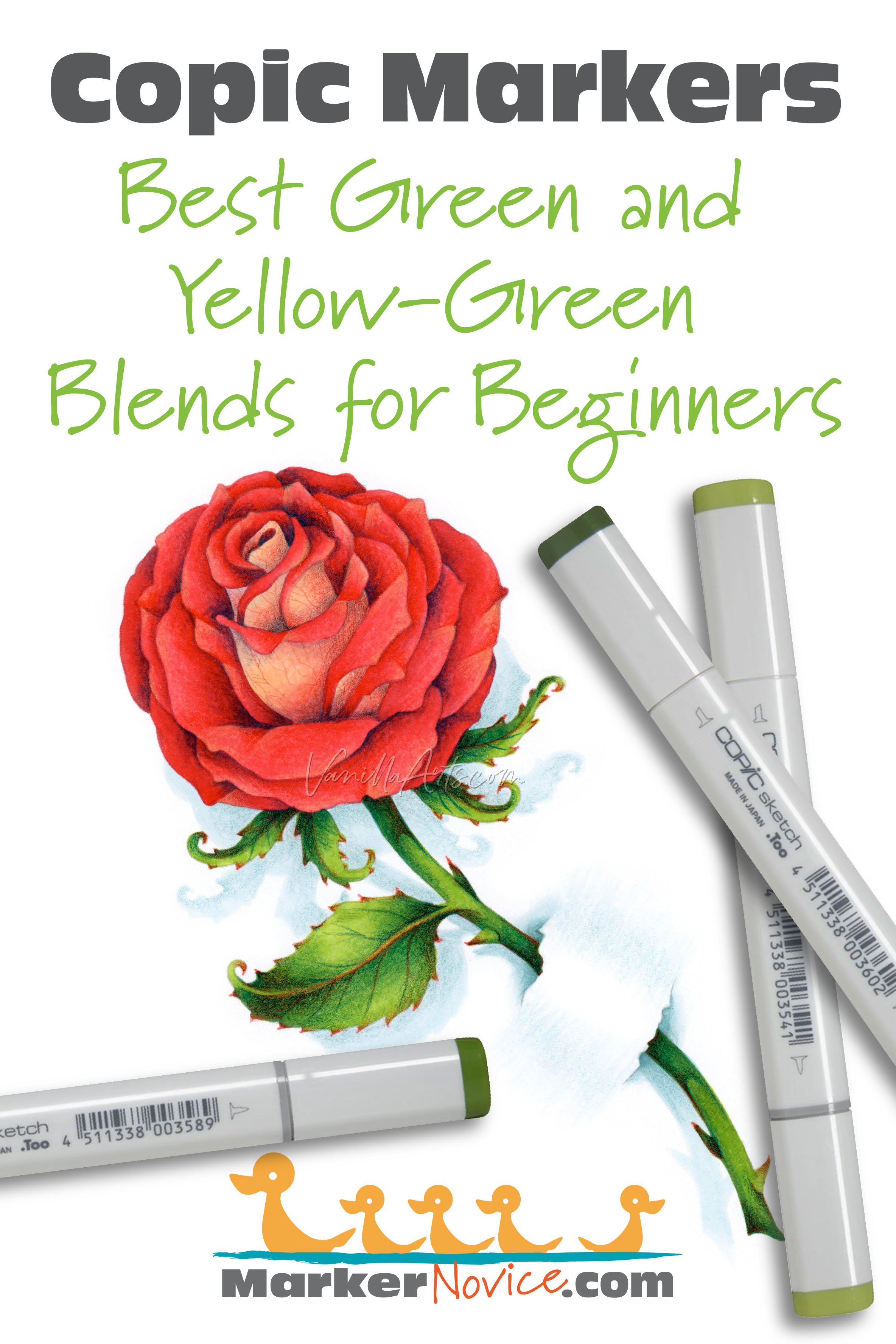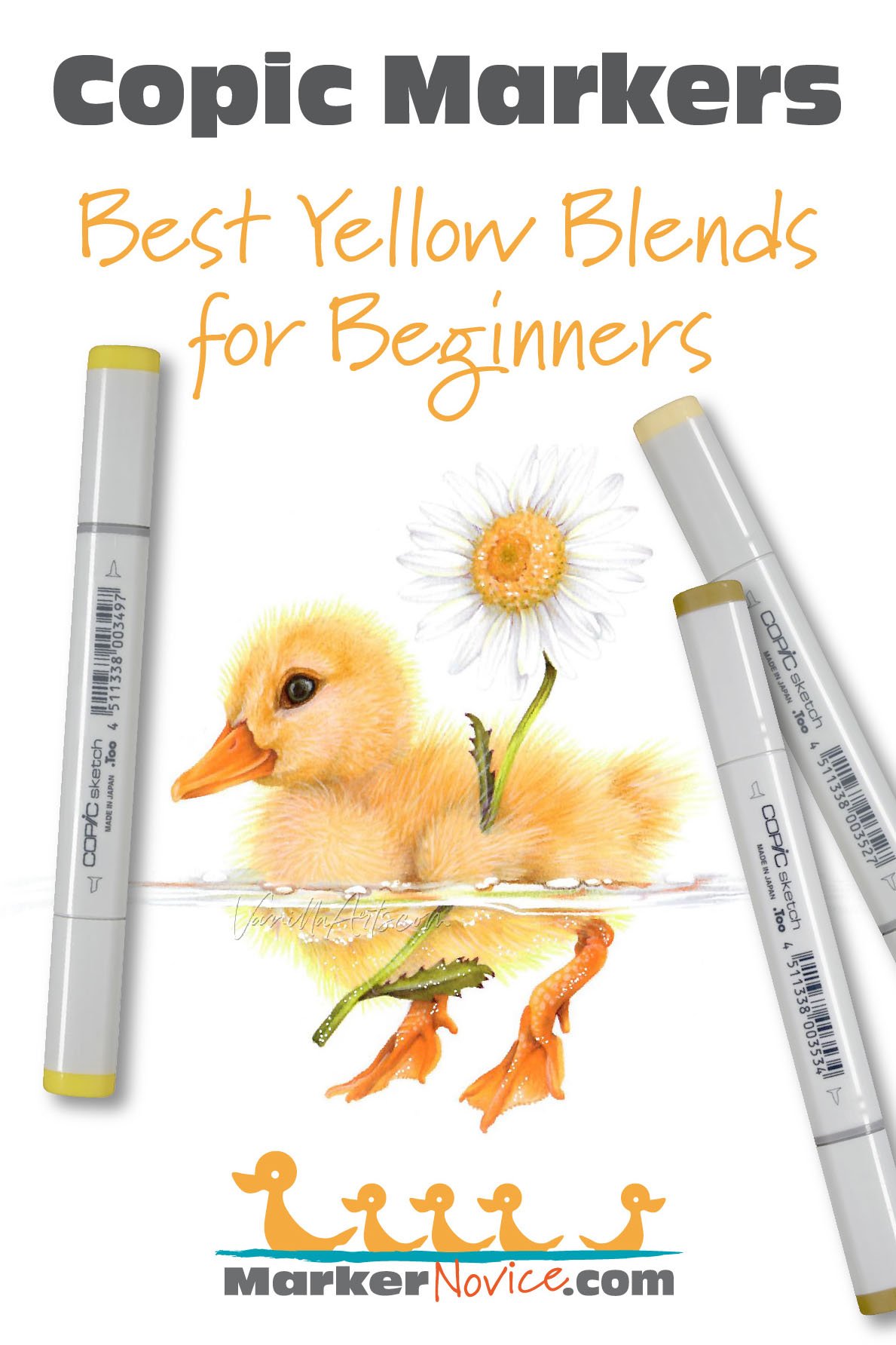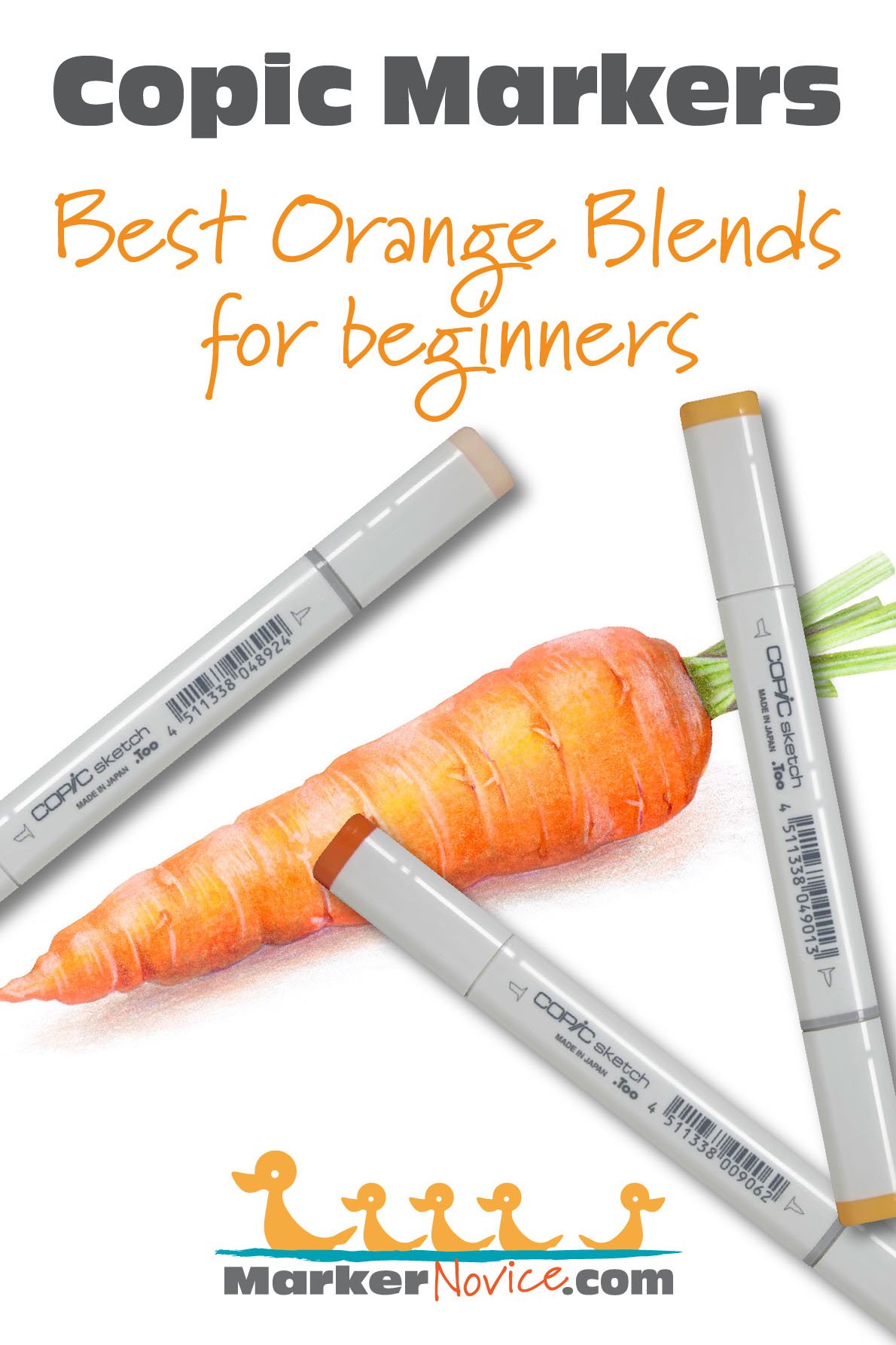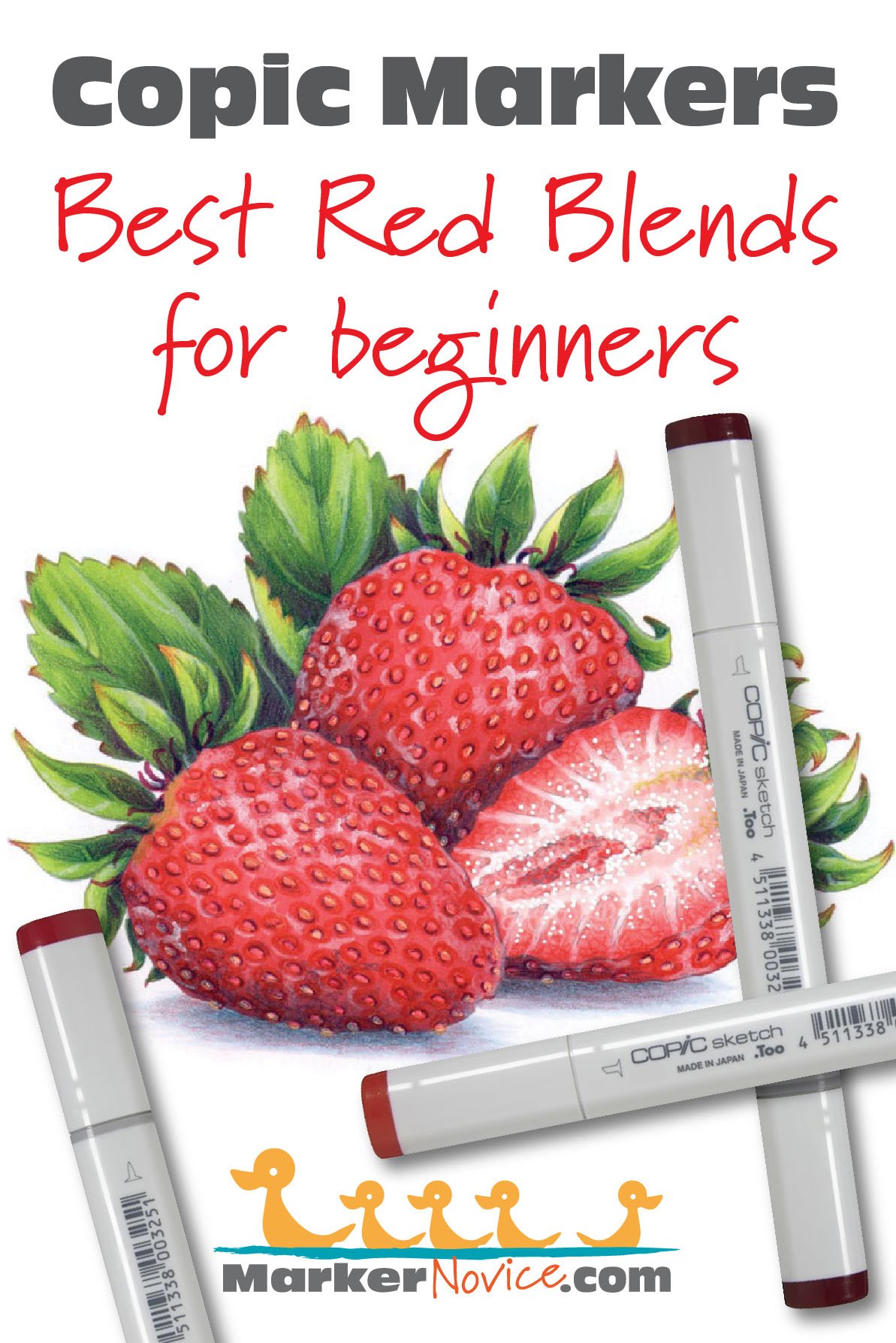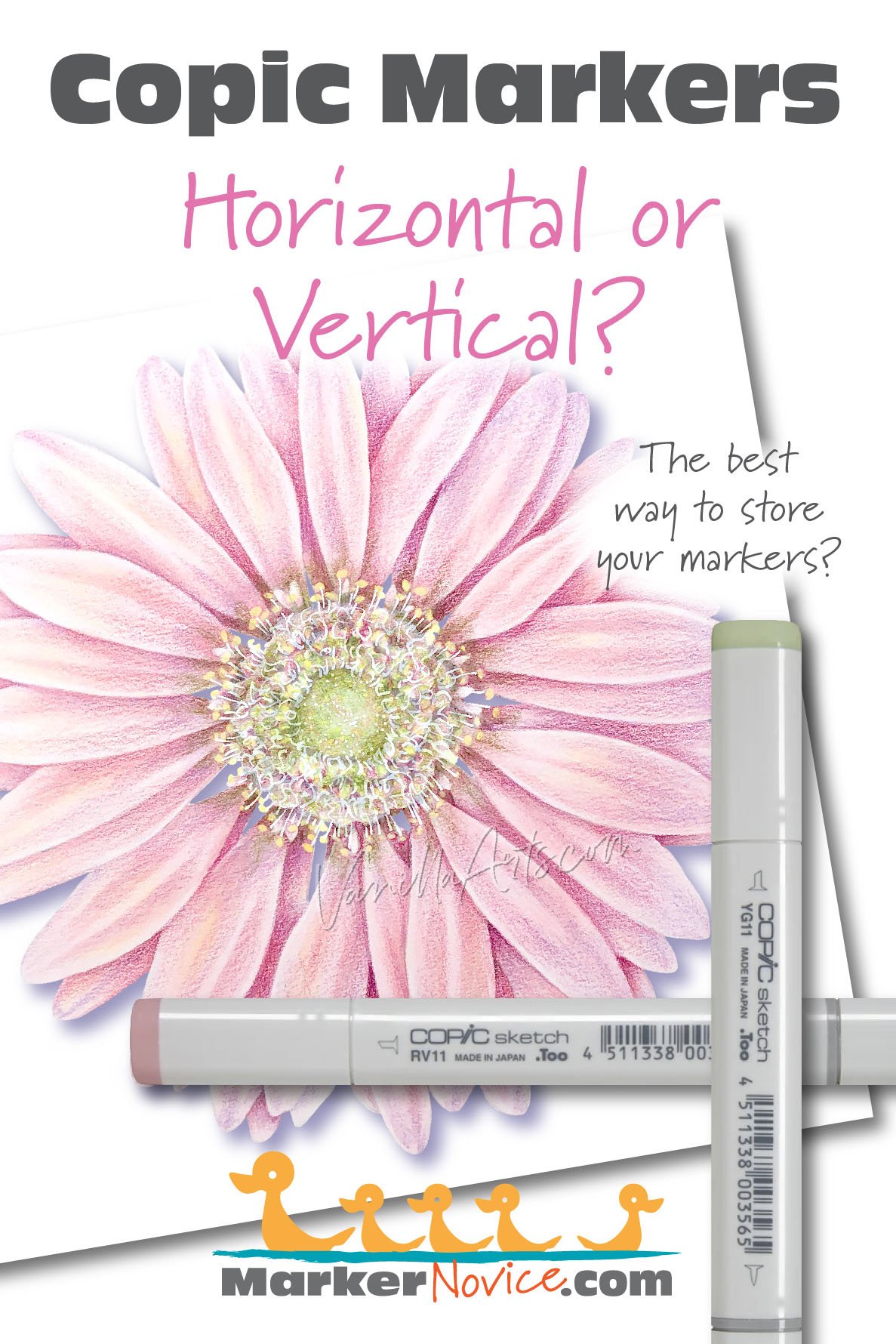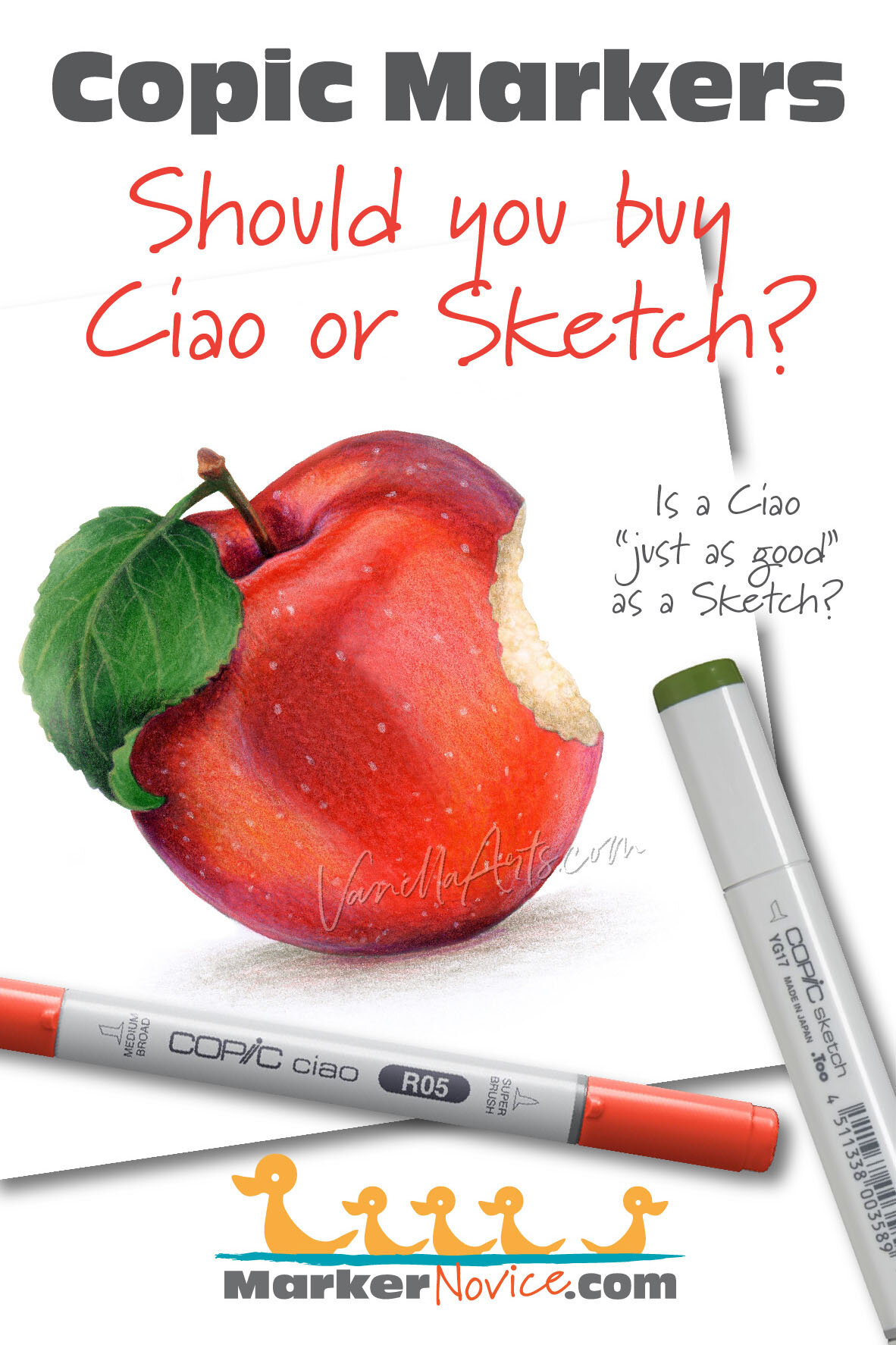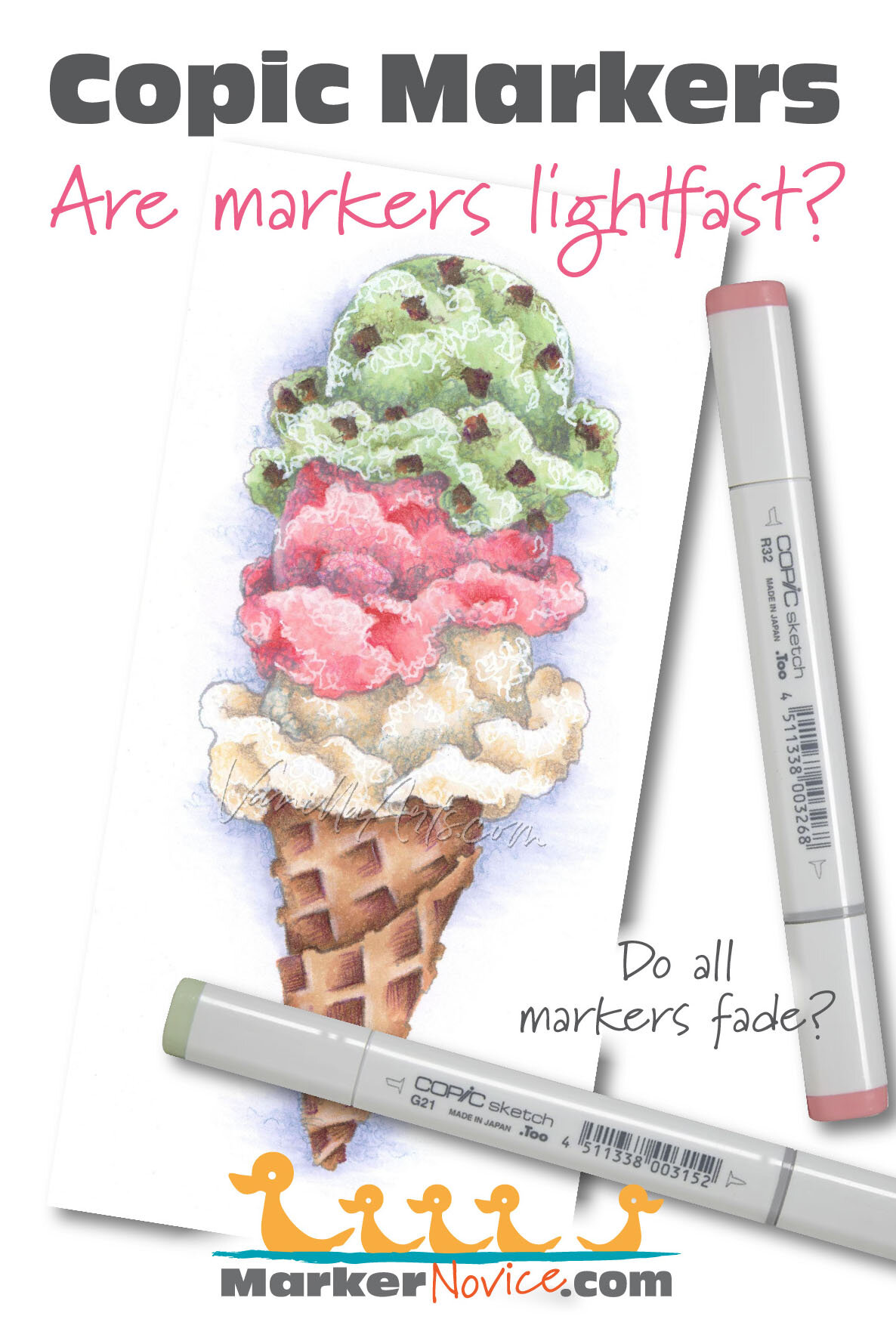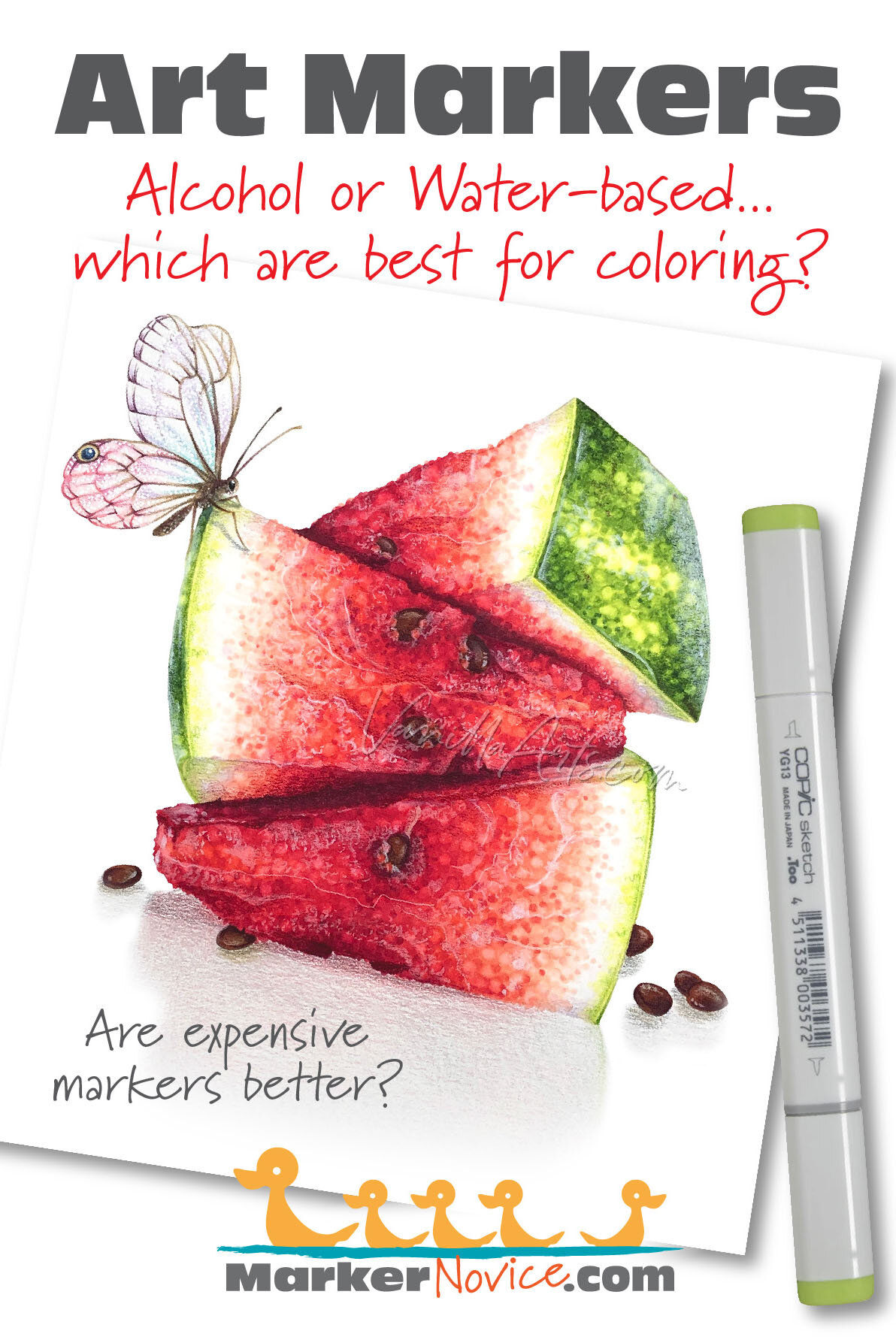You were told “Ohuhu is the Copic slayer! They’re like Copic Markers but better!”
Is it true?
Every Ohuhu Marker has different characteristics based upon its unique ink formula. No matter how great they say the marker is, test results do not lie.
So are Ohuhu markers as great as you’ve heard?
Let’s look at Ohuhu G070 to find out.
WARNING: Ohuhu markers have numbers on the cap but not on the body of the marker. We do not recommend coloring with both caps off due to the risk of accidentally placing the wrong caps on a marker.
Test results: Ohuhu G070 Lemon Green
REFILL WARNING! At this time, Ohuhu does not sell refills for G070. To date, you must purchase a new marker when your current marker runs dry. See Ohuhu’s current list of refills here.
Temperature: A warm greenish yellow
Resemblance: Green Gold watercolor
Name: “Lemon Green” is a confusing description of the color. To my American ears, it sounds weird describing a lemon as green but when painting lemons, I do see green undertones... but that’s a stretch. Ultimately, I do believe this is a mistake in translating from Chinese to English as many of Ohuhu color names are as bad or worse than this. See below in the Color Family and Cap Numbering sections for more confusion.
Actual Value: N4
Unlike Copic, Ohuhu does not measure value— this is a glaring deficiency which makes finding blending combinations harder than it has to be!
All Copics are measured on a Neutral Gray value scale. The last number on the Copic cap indicates the value. We’re using the Copic scale to measure Ohuhu until Ohuhu releases a reliable value scale.
Cap Accuracy: The color of the plastic on an Ohuhu Honolulu G070 marker matches one coat of ink.
The most common complaint I hear in Ohuhu review videos is about the cap colors not matching the ink color. Honestly folks, I don’t have a problem with their plastic colors! I think the complaints stem from the caps matching 1-2 coats of ink, meanwhile the user is laying down 3-4 heavy coats. As you can see in my layering tests, the ink color builds with more layers. No company can make a cap that reflects the look of the ink at your preferred level! From what I’ve seen so far, Ohuhu caps are actually more accurate than Copic Markers.
Copic Substitution: Ohuhu G070 is slightly darker than Copic’s YG21 but otherwise, they are close in hue and value.
Note: similar colors rarely behave the same way. Normally in this section, I list reasons why the Copic substitution is easier to work with but in this case, the Copic YG-Twenty family is also a temperamental color. The two colors are not related as Ohuhu G070 shatters while Copic YG21 is a single colorant ink. See the test results for Copic YG23 here.
Buildup: G070 reaches a maximum value at 3 coats.
Overinking: We do not recommend using more than 3 coats of G070. As with most Ohuhu markers, four layers looks oversaturated and dull.
Shattering: This ink is a mixture of green and yellow inks. The green is stubborn and doesn’t move much during testing which indicates you’ll have some difficulty blending this color smoothly. Note, this is unusual in an ink containing this much yellow. Yellow inks tend to be easy to work with, G070 will be more of a challenge.
Chromatography testing shows this ink’s behavior when it comes in contact with #0 Colorless Blender (solvent). High shattering colors may leak unexpected color when you make corrections or attempt to blend with any color that has a high solvent to colorant ratio. Shattering is not bad, it’s just something to be aware of.
Staining: G070 stains the paper with a noticeable harsh yellow which we were unable to lighten.
With alcohol markers, a staining ink is generally a sign of a low quality ink. Staining inks bond to the paper fibers and are reluctant to release. Staining inks make blending harder than it has to be!
Lift: Normally, mistakes made with pale to medium alcohol inks are relatively easy to correct. Use caution when correcting G070. Notice the extremely dark dry-lines of ink on either side of the correction stripe. You’ll see similar effects when you try to lift G070 on your own project. Before attempting a correction, weigh the dangers versus the benefits.
See staining swatch. Sample was given 6 stripes of #0 Colorless Blender, drying between each stripe. Results indicate how much lifting you can expect.
Lightfast: G070 faded about 40% during the test period. This is far more than the average Copic but on par with most Ohuhu markers. In general, you can expect most Ohuhu to fade twice as fast as Copic.
Samples were swatched on X-Press It Blending Card. 1 layer of ink was exposed to windowsill sunlight for 21 days. Approximately 10 hours of sun per day based on weather conditions. Note: we do not recommend displaying original marker art under these conditions.
Ink Color Family: The “G” in G070 indicates that this marker is part of the G Green family.
The G family includes greens ranging from warm yellow greens to cool blue greens. The G’s all have either 1 number or 3 numbers after the G. It’s not clear why this decision was made.
Here’s where it gets bad— G070 (and the entire number series have been placed into the wrong family! This is a YG or GY marker, not a G.
In alcohol markers, the greens are often divided into 2-3 families:
YG/GY for warm yellow greens
G for viridian based cooler greens
BG for greens which strongly lean towards blue
Ohuhu makes 12 GY markers, most of which contain less yellow than G070! Why was this marker called G when it’s more Y than all the GY’s? It’s a complete mystery.
The Ohuhu lettering and numbering numbering system is complete garbage and doesn’t always make sense. Be warned, you can not trust anything you read on an Ohuhu cap.
Cap Numbering: G070 is part of an unrelated series of greenish yellow markers all starting with 0. The G0xx markers are roughly arranged according to value but the temperatures fluctuate wildly.
G020 is a yellow highlighter
G030 is a cool yellow
G050 is a bright acid green, slightly cool
G060 is a yellow chartreuse, matching G070 in value
G070 is almost identical to G060, just a hint warmer but the same value
G080 is a warm pea green, the darkest of the group but still just a medium value
As stated above, the Ohuhu numbering system makes no sense. The markers are not arranged in chromatic order so you can not trust the numbers to tell you whether this marker is lighter or darker than other Ohuhu markers with similar numbers.
I’m still early in the Ohuhu testing process. I will add more info to this article as I learn more and when I spot behavioral patterns.
From what I’ve learned so far, I will not be working with Ohuhu markers and I will discourage students from using them in my classes. They’re simply not worth the frustration.
Learn more about G070 Lemon Green, a deep green Ohuhu Marker. We swatch and test Ohuhu colors- layering, staining, lift, value, lightfastness, saturation, and cap accuracy. | MarkerNovice.com | How to blend alcohol ink markers.

